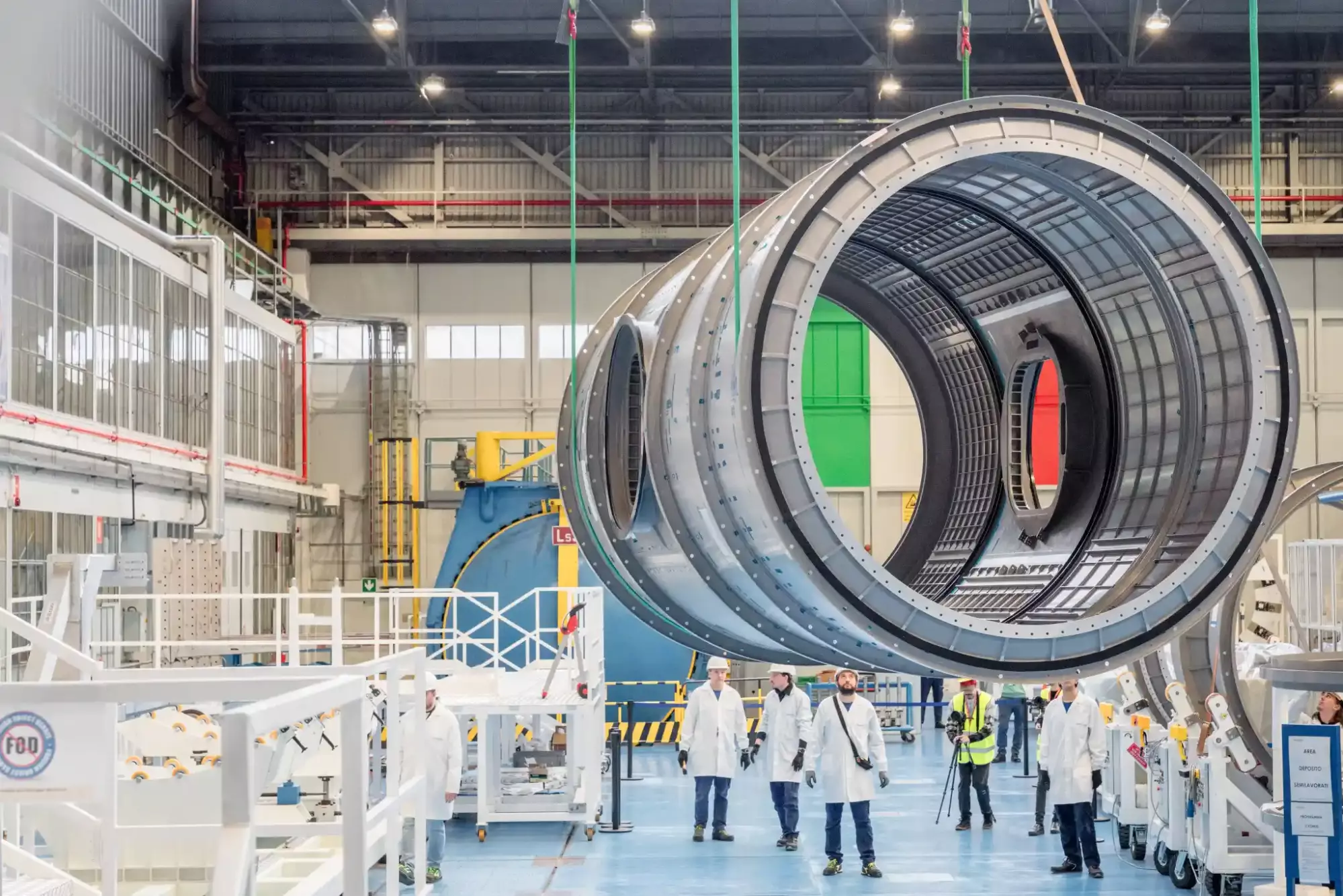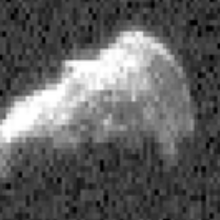As the International Space Station nears its retirement in 2030, NASA and its contractors are working full tilt on a new lab that will be whizzing through space much farther from Earth.
Right now, at a facility in Turin, Italy, engineers are stress-testing the core module for Gateway, a lunar space station designed to provide astronauts with a place to live, conduct scientific research, and prepare for moonwalks.
Though it may not look like much at the moment, the gunmetal-gray hollow cylinder, pictured above, is a critical facet of NASA's Artemis moon missions. It will house life-support systems for astronauts, exercise equipment, and banks for scientific instruments. NASA has dubbed the main module HALO, short for Habitation and Logistics Outpost.
If this all sounds like sci-fi mumbo jumbo that is decades into the future, think again: NASA and its partners plan to send HALO and its propulsion element into lunar orbit on a SpaceX Falcon Heavy rocket as early as next year, welcoming its first guests around 2028. If successful, Gateway will be the first moon-orbiting space station.
"NASA and its international partners will explore the scientific mysteries of deep space with Gateway," the agency says, "to return humans to the Moon and chart a path for the first human missions to Mars."

Maintaining a space station around a planetary body other than Earth won't be an easy feat. While the ISS orbits just 250 miles above Earth and is only a short spaceflight away in an emergency, the moon is over 230,000 miles in the distance, with the quickest journey back home taking two to four days.
Despite the challenges, NASA is getting lots of international help to bring Gateway to fruition. Europe, the United Arab Emirates, Canada, and Japan are contributing key components to build the station, which will have a unique path around the moon.
Scientists considered many potential orbits before determining the best fit for Gateway. The station will fly in a so-called "near rectilinear halo orbit." Since 2022, a small microwave-oven-sized spacecraft, CAPSTONE, has scouted out this path, which would look a little like a string of pearls hanging from a neck, if you drew it on paper.
The unusual orbit is intended to be fuel-efficient and offer relatively close access to the lunar south pole, where astronauts will explore, look for water ice around the shadowy craters, and practice living in an extraterrestrial environment.
Why not a low circular orbit around the moon, one might ask? It certainly would put the station closer to the ground, but it would also require a lot more fuel to counteract the tug of the moon's gravity, according to NASA. A distant retrograde orbit, on the other hand, while more stable and less fuel-consuming, would be too inconvenient for trips back and forth to the surface.
But the near rectilinear halo orbit, a weeklong loop around the moon's poles, is thought to offer the best of both worlds. The station would also continuously face Earth, allowing uninterrupted communication with flight controllers.
Tweet may have been deleted
The HALO section is just one of four modules where international astronauts will live and work. NASA has said the assembly of Gateway in space will happen in stages, beginning with the Artemis IV mission, slated for no earlier than September 2028, and finishing with Artemis VI. The expansion pieces will launch with the Orion spaceship atop NASA's Space Launch System, casually referred to as the "mega moon rocket."
If you're having trouble visualizing how this will all come together, take a look back at the new photo of HALO. Inside the module on the right side of the tube is where a cargo spacecraft and the European Space Agency's Lunar View, a module with large windows, will dock. That crucial ESA part will have refueling capabilities for the propulsion module.
NASA has given the propulsion module perhaps the least creative name in the agency's history: the Power and Propulsion Element. It will harness solar power for Gateway's subsystems and ionize xenon gas for the thrust needed to maintain the station's orbit.

To the left on the outside of HALO is a docking port where SpaceX's Starship and Blue Origin's Blue Moon landers will dock during the Artemis IV and V missions, respectively. NASA administrator Bill Nelson has said using private vendors will help the agency buy down the technical risks and costs for the Artemis program, which seeks to use the moon as a springboard for eventual missions to Mars.
"I've said it before: We want more competition. We want two landers, and that's better, and it means that you have reliability. You have backups," Nelson told reporters last year. "These are public-private partnerships. It's the new way that we go to the moon."
After engineers finish stress-testing HALO at Thales Alenia Space in Italy, the module will go to Gilbert, Arizona, where Northrop Grumman, its builder, will finish its outfitting and prep it for launch.
Topics NASA

































